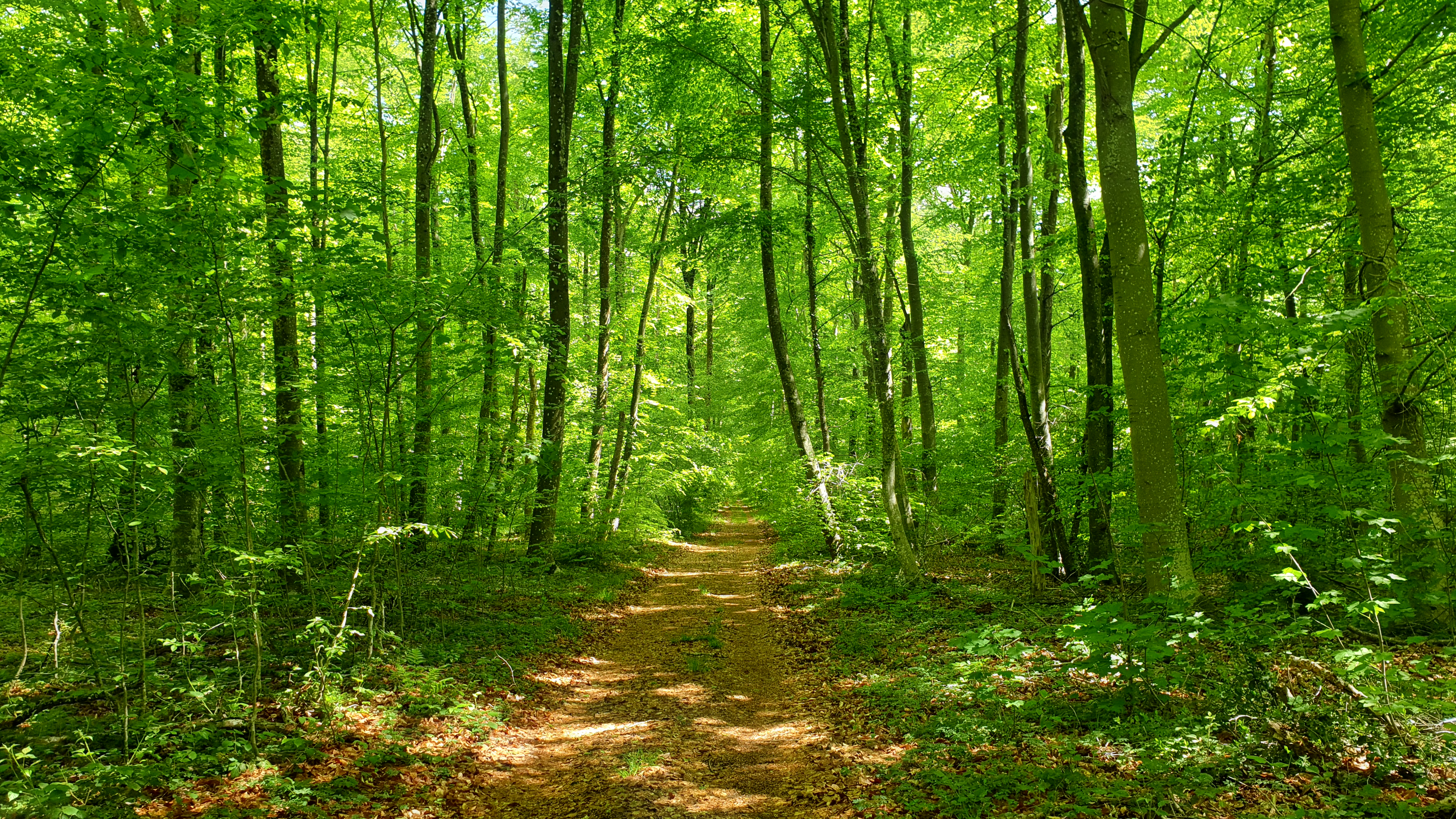Forest of Fontainebleau

The Forest of Fontainebleau, located in Seine-et-Marne, France, covers 25,000 hectares. Most of it (21,600 hectares) is managed as public forest. Its central towns are Fontainebleau and Avon. The forest ranges in elevation from 42 meters near the Seine River to 144 meters at the "Carrefour du Banc du Roi," just north of Fontainebleau.
Table of Contents
Aqueducts
The forest hosts aqueducts carrying water from the Vanne and Lunain rivers to Paris. These pipelines, 2 to 2.5 meters in diameter, deliver 270,000 cubic meters of water daily to the Parc Montsouris. The water flows naturally at 73 km over 33 hours.
Natural Heritage
The forest is home to:
- Plants: 5,685 species, including 1,350 flowering plants, 460 mosses, 2,700 fungi, 675 lichens, and 500 algae.
- Animals: 6,000 species, such as 5,600 insects, 60 mammals, 260 birds, 75 mollusks, 15 reptiles, and 18 amphibians.
Tree Types
Due to poor soil and historical animal grazing, the forest was sparsely wooded under Louis XIV. Major replanting in the 18th and 19th centuries led to today's forest composition:
- 42% oak
- 10% beech
- 40% Scots pine
The National Forestry Office (ONF) manages the forest, deciding which trees to plant and maintain for the next 20 years.

Protected Reserves
The forest has special biodiversity reserves:
- Strict Reserves: 1,062 hectares closed to the public.
- Managed Reserves: 1,305 hectares open to visitors.
Wildlife
The forest supports a large population of wildlife:
- 700 deer (about 3 per 100 hectares).
- 200–300 roe deer.
- 3,000 wild boars.
Unfortunately, wildlife often collides with cars, and boars sometimes wander into towns. Hunting, regulated from November to February, helps control animal populations.
Forest Protection
Since 1966, two ministries oversee public forests: Agriculture and Ecology. Fontainebleau Forest has various protections:
- UNESCO Biosphere Reserve (1998): Promotes environmentally friendly management.
- Natura 2000 Zone: Preserves habitats and species.
- Exceptional Forest (2013): Recognizes its unique value.
The forest is fragile, with threats like erosion, fires, litter, and vandalism. Rules include:
- Walk only on marked trails.
- Cyclists must use paths at least 2.5 meters wide.
- No fires or smoking during restricted periods.
- Carry out your trash.
Historical Significance
The forest has been important throughout history:
- Prehistoric Times: Nomads lived near the forest 40,000 years ago. Stone tools and animal bones (bears, elephants, giant deer) have been found. The forest contains over 2,000 rock shelters with engravings from various periods, mostly the Mesolithic (9,000–5,500 BCE).
- Gaulish Era: The Ligures and Celts settled nearby in Avon and Larchant.
- Ancient Landscape: Millions of years ago, the area was under a sea, depositing sands that later hardened into Fontainebleau sandstone. This unique rock forms large, picturesque formations popular for bouldering.
Cultural Highlights
The forest inspired many:
- Writers and Artists: In the 19th century, it became a favorite spot for Romantic writers and Barbizon School painters.
- Tourism: Marked trails appeared in 1842, with the first tourists arriving by train in 1849.
Flora and Unique Features
The forest's main trees include:
- Oaks (42%)
- Scots pine (40%)
- Beech (10%)
The forest also has rare "remarkable trees," like the "Chêne du Rocher Canon," a labeled oak. Its varied soils (acidic, calcareous, dry, and wet) allow diverse plant life, including:
- 1,500 higher plant species.
- 1,700 types of fungi.
- 440 lichens and 480 mosses.
Modern Challenges
The forest faces risks from:
- Overuse by visitors.
- Vandalism of ancient rock art.
- Erosion and loss of biodiversity.
Efforts continue to ensure the forest remains a treasure for nature, history, and culture.








